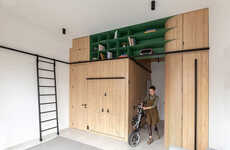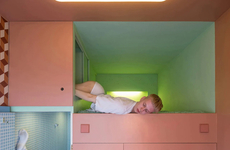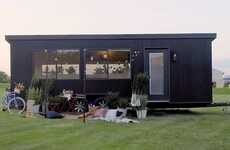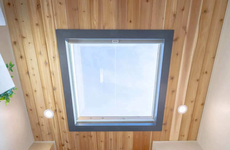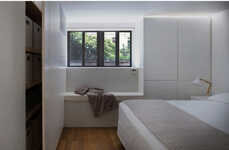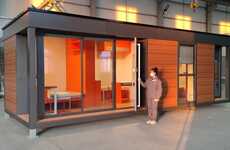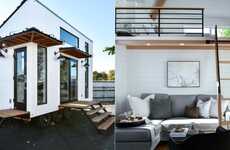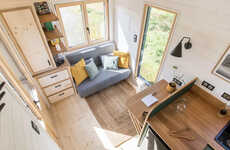
The Smart Student Unit is an Inexpensive Option
Sarah St.Jules — September 12, 2013 — Eco
References: visuall.net & gizmag
The Smart Student Unit may just be the solution to over-crowding for those who live in residences.
Swedish company Tengbom has created a compact home that has all the features of luxury accommodations. The entire home is 108 square feet, and is made entirely out of locally sourced materials. The inside has a bed, study area and a full kitchen and bath. Many items in the home work as two separate features, as an example the tables also act as blinds for the windows.
The walls are thick enough to keep both the cold and heat out. The Smart Student Unit was designed to offer a cheaper, and more space-conscious alternative to current options. This project has been very successful so far, and this could be the future of student housing.
Swedish company Tengbom has created a compact home that has all the features of luxury accommodations. The entire home is 108 square feet, and is made entirely out of locally sourced materials. The inside has a bed, study area and a full kitchen and bath. Many items in the home work as two separate features, as an example the tables also act as blinds for the windows.
The walls are thick enough to keep both the cold and heat out. The Smart Student Unit was designed to offer a cheaper, and more space-conscious alternative to current options. This project has been very successful so far, and this could be the future of student housing.
Trend Themes
1. Compact Sustainable Living - The trend towards smaller, eco-friendly living spaces utilizing locally-sourced materials and multifunctional design features for increased efficiency.
2. Affordable Micro-housing - The trend towards providing low-cost housing solutions through the development of small, modular living spaces.
3. Smart Home Innovations - The trend towards integrating technology and innovative design features for increased functionality and improved quality of life within modern homes.
Industry Implications
1. Real Estate - The real estate industry can explore the opportunity to develop and market eco-friendly, affordable micro-housing solutions for students, young professionals and those looking to downsize.
2. Construction - The construction industry can adapt to the trend of compact, sustainable housing by utilizing locally-sourced materials and efficient building methods, ultimately reducing construction costs and environmental impact.
3. Interior Design - The interior design industry can capitalize on the trend of multifunctional furniture and design features for compact living spaces, providing solutions for individuals looking to maximize their living space without sacrificing style or functionality.
6.9
Score
Popularity
Activity
Freshness

